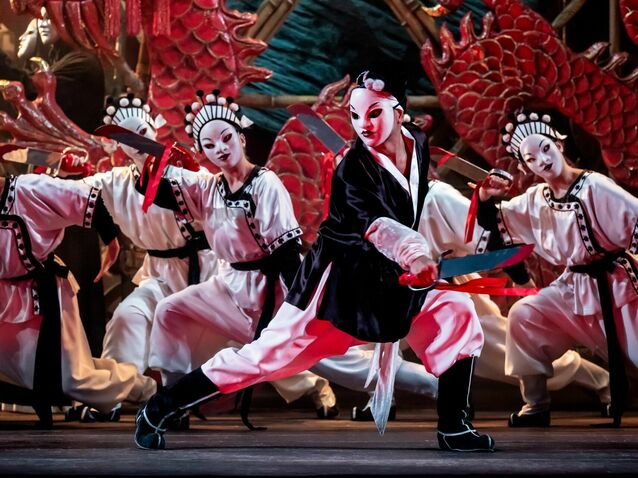 © Camilla Greenwell
© Camilla Greenwell
Schedule
Glossary
show the glossarySearch
Connect
-
Connect to your account
-
Create your account
Community
Chronique à la une
 © Camilla Greenwell
© Camilla Greenwell
Filter
All columns
The Good Trittico by Davidsen, Jaho and Maestri
Xavier Pujol35 years after having last appeared at Liceu, Puccini's Trittico has returned to its stage. It has done so in a 2017 Munich Opera production directed by Lotte de Beer. Achieving a visual and dramatic union in a single production of three titles as different as those that make up Il Trittico is not at all easy, the Dutch stage director half succeeds at it. De Beer takes death as a thread: in the first opera, a passionate thriller, there is a murder; in the second, a melodrama, we...
English National Opera’s It’s a Wonderful Life Brings a Touch ...
Sam SmithFrank Capra’s It’s a Wonderful Life of 1946, itself based on Philip Van Doren Stern’s short story The Greatest Gift (self-published in 1943), is one of the all time classic Christmas films. It sees George Bailey, played by James Stewart, grow up in the first half of the twentieth century in an American town named Bedford Falls. George has ambitions to go to college and see the world, but at every point in his life he is held back by circumstances and a sense of...
Poignant and Perfect Production of The Rape of Lucretia at the...
Sam SmithBenjamin Britten’s The Rape of Lucretia is the first work to which he applied his term ‘chamber opera’. With an English libretto by Ronald Duncan that is based on André Obey’s play Le Viol de Lucrèce, the piece premiered at Glyndebourne Festival Opera in 1946 and was seen there again in 2015 following the development of a touring version in 2013. It is set towards the end of the sixth century B.C. during the reign of the seventh and final King of...
English National Opera Presents a New Production of The Yeomen...
Sam SmithThe Yeomen of the Guard of 1888 is one of Gilbert and Sullivan’s richest and darkest operettas. Set in the Tower of London in the sixteenth century, it sees one Colonel Fairfax face execution. The charge of sorcery, however, was the doing of his uncle who stands to inherit his estate if he dies unmarried. Fairfax plans to thwart his relative by marrying in the final hour of his life, and asks his friend Sir Richard Cholmondeley to find a suitable bride who will receive a large...
A Fun Staging and Superb Performances in Alcina at the Royal O...
Sam SmithThe story to be found in Handel’s Alcina of 1735 comes from Ludovico Ariosto’s epic sixteenth century poem Orlando furioso. This had already been employed by Francesca Caccini in La liberazione di Ruggiero dall’isola d’Alcina of 1625, which is recognised today as the first opera to be written by a woman. Handel himself used the libretto of L'isola di Alcina, an opera that was set in 1728 in Rome by Riccardo Broschi, which he acquired the...
Great Voices For a Cliché Trovatore at the Liceu
Xavier PujolIl Trovatore, the opera that is supposed to be performed in A night at the opera (1935), the immortal Marx brothers film, has always been called in modern - and not so modern - times a surviving opera in the repertoire thanks to its musical excellence despite its deliriously absurd and exaggerated plot. In this sense, its companions in the 'popular Verdian trilogy', Rigoletto and Traviata, benefit from supposedly higher quality arguments. That is not true, Il Trovatore,...
